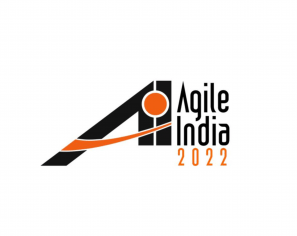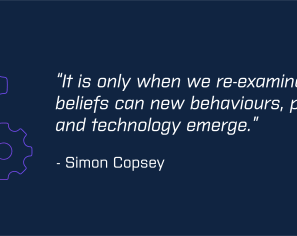November 13, 2019 | Software Consultancy
Pioneering and pushing technology boundaries – pretty much a given nowadays for the software-driven startup. Here are some insights we’ve observed working with a number of venture capital (VC) companies who have managed to navigate the choppy waters and successfully grow their business including winning further investment along the way.
With our deep hands-on technical expertise and pragmatic focus, OpenCredo has become a natural software acceleration partner for VC funded organisations who are looking to deliver tangible value as effectively as possible. We’ve been brought in to work alongside these innovators at various stages of their journey. As such we’ve gained an appreciation for and acquired, first-hand insight into some of the pressures and challenges faced. From getting and securing that next round of funding, to grappling with the technical decisions and challenges inherent in sensibly evolving offerings to accommodate future growth and scaling.
This blog is written exclusively by the OpenCredo team. We do not accept external contributions.

“The only rollercoasters I get on are startups.” – Oren Etzioni
Understandably, young businesses are always striving to deliver the next value-adding product or service. In many cases, this is strongly correlated with securing their next round of funding. They march towards this goal by creating a functioning prototype; demonstrating its value and observing its uptake and adoption through iterations. At this stage, the business needs to swiftly prove their product is viable and that there’s a demand for it in the market. And so the balancing act begins.
In these early stages, technology choices and decisions are often geared towards ‘proving the here and now’. As a result, important technical decisions which do not necessarily influence or impact the immediate short term goals, are often sidestepped or deferred until later. Whilst not problematic to begin with, issues can arise when the weight of expectation shifts towards having to scale and grow the companies offering to handle increased demand. Failure to account and adapt for this reality runs the risk of simply continuing to build upon a tactical technology stack. And if left unchecked, can lead to building on an unstable and complex architecture (see our recent infographic on five of the most common pitfalls we see with Cloud Native adoption).
Recognising these tradeoffs, and planning early enough, helps to balance the scales. This ensures these tipping points do not become massive stumbling blocks. Especially when it can least be afforded – just when you’re starting to grow!
When the focus is on funding, first impressions count. This thinking can direct many start-ups towards developing the more visual and frontend aspects of their product. And this often comes at the expense of maturing the underlying architecture.
Using the end-users experience to explore and validate business value is a proven and growing trend within the tech industry. The rise in popularity of the design thinking mindset bears evidence of this. However, without experience and a healthy dose of pragmatism, there can be an unhealthy fixation on the UX aspect – to the detriment of the unsexy, but just as valid backend tech.
This can be a risky move in the long run. This is why we have adapted our own design thinking workshop, OC Accelerate, to seek to explicitly balance slightly broader aspects. Focusing not only on desirability from the end users’ perspective, but also viability for the business and crucially ensuring a technically feasible path exists to progress forward against. The emphasis will often differ depending on which stage the business is at.
Regardless of whether design thinking is used or not, we observe that organisations able to experiment and optimise across the broader aspects of the delivery process (not just UX) seem to get the best bang for their buck. Minimising wasted time and effort on unfruitful escapades allows a focus on genuine and achievable innovation.
Progressing past key business milestones and growth points typically generates requirements for new sets of skills, mindsets and approaches. Depending where along the spectrum the startup is, the type and aptitude of individuals best suited to tackling these challenges also varies.
This is described quite nicely in Simon Wardley’s pioneers, settlers and town planners (PST) blog. Early stage development in a startup is often characterised by a high-level of uncertainty with lots of experimentation – and pioneer types thrive under such conditions. Simon notes “they create ‘crazy’ ideas … they make future success possible”. These brilliant minds are not however necessarily the types who enjoy dotting the i’s and crossing the t’s. After a few rounds of funding, different challenges come into play. Challenges such as productionisation, scaling and hardening of the product to make it fit for a large audience. For this, the settlers are needed. These likewise brilliant minds tend to have quite a different aptitude and focus though. One more geared towards turning prototypes or MVPs into more a reliable product and “make the possible future actually happen”. Eventually, the town planners will also come to the fore. They can industrialise the solution and “[take] advantage of economies of scale”. As Simon notes “Each group innovates but innovation is not the same for each group”.
So it’s important to know which stage you are at, what type of skills, and associated people are needed, and when. Such knowledge and insight allows for optimisation which is tuned to achieving optimal growth at each stage within the business.
Having a strategic approach will help keep your business in check with the long-term vision whilst still addressing immediate business needs. Without it, it’s easy to lose sight of what you were originally trying to achieve. As challenges and demands arise with growth, this can stir up a reactive culture.
It’s our observation that the start-ups that grow successfully recognise and explicitly choose continual adaptation in order to cater for today’s innovation, but always with an eye on the future. This sets them up to be in a position where their technology can adapt as their business requires; where they can react more quickly; and be free to focus on innovation.
Perhaps you’ve reached the point where you need to evolve your business to the next stage. And maybe you’ve hit an impasse with your current architecture approach.
Startup or not, OpenCredo has successfully partnered with organisations looking to establish and build on a strong foundation which allows for the pragmatic evolution towards goals. If your business is looking for concrete ways to explore and discover innovation options and accelerate your technical delivery, we’d love to chat.
If you are interested in an initial tech innovation review or health check, visit our website.

Agile India 2022 – Systems Thinking for Happy Staff and Elated Customers
Watch Simon Copsey’s talk from the Agile India Conference on “Systems Thinking for Happy Staff and Elated Customers.”
Lean-Agile Delivery & Coaching Network and Digital Transformation Meetup
Watch Simon Copsey’s talk from the Lean-Agile Delivery & Coaching Network and Digital Transformation Meetup on “Seeing Clearly in Complexity” where he explores the Current…
When Your Product Teams Should Aim to be Inefficient – Part 2
Many businesses advocate for efficiency, but this is not always the right goal. In part one of this article, we explored how product teams can…